 Tackling Canada’s overwhelming household debt
Tackling Canada’s overwhelming household debt
The high level of household debt has been cited by the Bank of Canada as Canada’s number one domestic financial vulnerability and latest statistics show that the amount of money Canadian households owe compared to what they earn keeps growing.
Canada Statistics data shows that seasonally adjusted household credit market debt as a proportion of disposable income rose to 178.5% ($1.78 debt for every $1 earned) in the fourth quarter of 2018.
The Debt Service Ratio, a measure of the proportion of income used to repay capital and interest on obligated debt, rose to 14.9% of income in the last quarter of 2018 from 14.8% the previous quarter and up from 14.1% the previous year.
Carolyn Wilkins, Senior Deputy Governor of the Bank of Canada, expressed her concern about the vulnerable financial position many Canadian households find themselves in a recent speech, warning that debt can put people in a difficult spot if interest rates go up or their incomes fall.
More than that, the inaugural BDO Canada Affordability Index last year showed that three out of 10 Canadians don’t have enough money to meet their basic needs, 52% can just cover basic costs and one-out-of-four say their debt is overwhelming them. That means they are most likely resorting to credit cards to pay for these basic needs, increasing their indebtedness further.
The extent of the problem is becoming evident in the delinquency statistics, particularly with respect to those older than 65. For them, the 90-day delinquency rate on debt excluding mortgages climbed for a third straight quarter to 0.96% at the end of 2018, according to Equifax. It says that is a 7.2% increase from the fourth quarter a year earlier, and follows gains in the prior quarters of 4.3% and 4%. The delinquency statistics also show a trend of late payments in auto loans and leases.
So how did we get into this untenable position?
Well, years of easy money and historically low interest rates in the wake of the 2008 crisis have encouraged households to borrow much more than they save. A house price boom, particularly in Vancouver, where house prices are 64%* higher than five years ago, and Toronto, up 56%, has seen buyers having to take out bigger mortgages. This, together with interest rates rising in line with the Bank of Canada’s attempts to normalize monetary policy, have resulted in a double whammy for households with mortgages.
The government did, belatedly, put in measures to discourage prospective homebuyers from overextending themselves when interest rates were on the rise. It required banks to conduct a stress test with anyone applying for a home loan to ensure the applicant could afford the repayments if interest rates were two percentage points higher.
This year, however, the Bank of Canada is widely expected to take a break from raising interest rates due to concerns about the strength of the economy and level of household indebtedness. It’s also in line with a more dovish monetary policy approach globally. Central banks elsewhere are also concerned about the state of their economies and uncertain about how trade tensions between the US and China and Brexit will play out.
Flatlining interest rates this year are not likely to take the pressure off homeowners, however, with many due to renew their fixed-rate mortgages at the prevailing higher interest rate.
Where to now?
This week the US Federal Reserve surprised markets with its more dovish than expected interest rate outlook. For now, no interest rate hike is expected this year and only one is on the cards for next year. The Fed’s stance was based on recent economic statistics that showed some weakness appearing in the US economy.
At home, the spread on 10-year government bond yields between the US and Canada has widened dramatically, which might be a sign of diverging growth prospects for the two countries. The yield on the 10-year government of Canada bond has slipped below 1.7%.
One positive outcome of the declining yield for Canadians is lower mortgage rates which might prove helpful to already indebted households, provided it does not spark renewed frenzy in the housing markets.
The most recent federal budget offers a number of incentives for first-time home buyers with household income under $120 000. The government’s intention is to pave the way for millennials to become home owners. But this could also re-ignite the housing market in certain regions.
Although interest rates on hold may offer indebted households a temporary reprieve, the only sustainable way for them to get out of debt is to take a firm grip of their household finances and slowly and steadily reduce their debt commitments.
To do this they can cut expenses by reworking their budgets, reducing expenses, cutting up their credit cards, looking at getting a second job or choosing to rent instead of own. BDO’s Affordability survey found that indebted Canadians had already started taking these steps to pay down debt and that reducing their debt load was a top-three priority.
This is encouraging because in better managing their spending and credit, indebted households will be able to rest easy knowing that they have taken back control of their debt and spending and will eventually be in a position to accumulate funds that can be redirected into saving and investing.
But, just like the central banks, it is going to take a lot of patience and time before achieving this new normal – and the rewards associated with it.
*Canadian Real Estate Association
Garnet O. Powell, MBA, CFA is the President & CEO of Allvista Investment Management Inc., a firm that manages investment portfolios on behalf of individuals, corporations, and trusts to help them reach their investment goals. He has more than 20 years of experience in the financial markets and investing. He is also the Editor-in-Chief of the Canadian Wealth Advisors Network (CWAN) magazine. He can be reached at gpowell@allvista.ca

